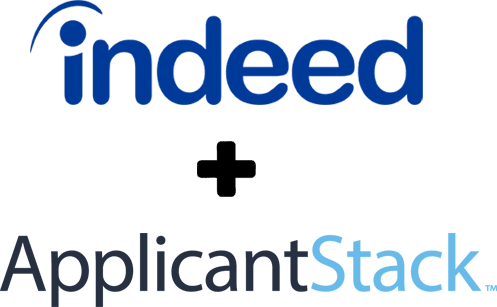The average tenure of an employee aged 25 to 34 years is only 2.8 years, according to the most recently available stats from the Bureau of Labor Statistics. That’s a pretty quick turnaround that ends up costing organizations money in recruiting expenses, onboarding, training and more.
So, how can businesses improve employee retention and encourage qualified candidates to stick around longer? From the job listing itself to the onboarding process and developing a strong company culture, these strategies can help you achieve success.
What Is Employee Retention and How Is It Calculated?
Employee retention refers to the ability of an organization to keep its employees engaged and satisfied. When retention is high, turnover rates decline—which should be the goal for most organizations. When retention is low, it can cost your organization a lot of money.
According to the Society for Human Resources Management (SHRM), the average cost per hire is nearly $4,700. Some estimates claim that the total cost of hiring a new employee can be three to four times the salary for the position being recruited. Expenses related to high turnover include not only recruitment costs but lost productivity and disruptions in workflow as well, which is why developing and implementing strategies for better retention can be so valuable.
How To Calculate Average Employee Retention
Calculating employee retention involves measuring the percentage of employees who remain with the company over a certain period, usually annually.
Here’s a simple formula to calculate your employee retention rate:
Employee retention rate = (number of employees at the end of the period – number of employees who left during that period/number of employees at the start of the period) x 100
To break it down further, here’s an example:
- Start by determining the number of employees at the beginning of the year. Let’s say the company had 200 employees on Jan. 1, 2023.
- Next, determine the number of employees at the end of the year. For example, the company had 180 employees on Dec. 31, 2023.
- Calculate the number of employees who left during the year. This is the difference between the number of employees at the beginning of the year and the number of employees at the end of the year. In this case, it would be 200 – 180) = 20
- Now, calculate the retention rate using the formula presented above:
Retention Rate = ((180 – 20) / 200) * 100
= (160 / 200) * 100
= 0.8 * 100
= 80%
In this hypothetical scenario, the retention rate is 80 percent.
Top Reasons for Employee Turnover
High turnover is seldom a mystery. In fact, employees are pretty good at indicating why they have left or are planning to leave their organizations—and the reasons vary.
According to SHRM, a few of the most prevalent reasons that lead to higher turnover include:
- Compensation.
- Unsustainable work expectations.
- Uninspiring or uncaring leaders.
5 Employee Retention Strategies To Boost Employee Engagement
Having poor retention doesn’t mean your company is doomed. In fact, there are effective ways to help boost your retention rate, most of which involve improving your organization’s offerings and enhancing the employee experience.
1. Offer Competitive Compensation and Benefits
To prevent high employee turnover, it’s important to provide competitive compensation and benefits packages, which are critical to prospective employees. A Forbes study revealed that as many as 40 percent of employers believe their employees have left their jobs to find employment that offers better benefits. According to the same study, only slightly more than half of employees are happy with the perks offered by their current employer.
So, the first part of a successful employee retention strategy is to ensure that employees are being paid fair wages for their work and solid benefits that can support them and their families’ well-being.
2. Offer Career Development Opportunities
Employees don’t want to feel stuck in their roles; they want something to work toward. According to research conducted in 2023, 75 percent of surveyed employees either agreed or strongly agreed that career development was a priority over the past year.
Here are a few ways employers can support employees in their mission to develop as professionals:
- Offer ongoing training
- Create a mentorship program
- Provide more frequent feedback on performance
3. Provide Employee Recognition and Rewards for Jobs Well Done
Acknowledgment goes a long way in the workplace. A recent study by Gallup revealed a correlation between employee recognition and employee outcomes—including a 22 percent reduction in absenteeism, which can eventually lead to turnover.
To facilitate productivity and employee satisfaction, employers should reward employees for their contributions and achievements to their teams and to the wider company. This is done through formal recognition programs, performance-based bonuses or even simple gestures of appreciation like thank-you notes or public praise.
4. Enable a Healthy Work-Life Balance
It isn’t surprising that nearly everyone considers a healthy work-life balance to be important (94 percent), according to a 2023 Randstad survey. But what exactly does that mean today? In the same survey, 82.9 percent and 71 percent of global respondents consider flexible working hours and work locations to be essential, respectively.
Meeting employee expectations, like flexibility and aligning on value—and prioritizing people—will ensure that you’re set up for success in terms of increasing retention.
5. Streamline the Hiring Process
Creating a positive candidate experience directly impacts the employee experience and your retention rate, and it starts with the job listing. According to a Robert Half survey, more than half of qualified candidates lose interest in a position if the role responsibilities are unclear. So, first things first, job postings need to be accurate, updated and attractive.
Tools to help amplify listings; screen, select and interview candidates and onboard newcomers are invaluable. From posting to onboarding, the recruiting process should be informative, engaging and optimized to ensure the best possible results.
Streamlining the Hiring Process With Applicantstack
A company culture that touts values in alignment with employees and puts people first is a recipe for retention success.
Applicantstack optimizes all aspects of recruiting and talent screening to offer businesses and candidates a satisfying, streamlined experience for more engagement, increased productivity and heightened retention. To see firsthand how Applicantstack can help streamline your recruiting and hiring, candidate management and onboarding for a better candidate experience, start for free today.
- 3 Tips to Improve Communication with Applicants - April 26, 2024
- Understanding Contract-To-Hire and How It Works - April 23, 2024
- Should Your Job Listings Include Salary Information? - April 19, 2024











